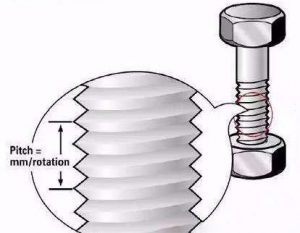The Principle And Characteristic Analysis Of Fastener Torque Test Method
Fastener torque is divided into two kinds: static torque and dynamic torque. Static torque refers to the instantaneous torque required to rotate a fastener in the direction of tightening after it has been secured. The torque was measured after loading. Dynamic torque refers to the maximum peak value measured when the fastener is fixed. Torque wrenches and power tools can apply dynamic torque. Dynamic torque cannot be measured after the fastener has been tightened. The torque value obtained by online measurement during dynamic torque loading. The detection torque is the same for both torques.

As a professional fastener manufacturer, Xinchi Fastener Company is pleased to share the fastener torque test method, which mainly includes the following three methods: tightening method (adding method), marking method (marking method), and loosening method.
Tightening method
Tightening method (screwing method) principle: tightening method (screwing method) torque wrench steady force gradually increases torque (avoid impact), when the nut or bolt just started to produce a small rotation of its instantaneous torque value is the largest (because overcome static friction force). Continue to rotate, and the torque value will fall back to the transient stable state, where the torque value is the torque obtained from the check.
The advantages of the tightening method (screwing method): simple operation, but the operator needs to be skilled and experienced.
The disadvantages of the tightening method (screwing method): 1. There is the possibility of secondary fastening; 2. It is difficult to determine when the bolt starts because of subjective factors; 3. When the bolt is started, the actual torque value should be about the torque value at the time of installation, so the test value is generally larger.
Static torque: This method is used for testing residual torque and is suitable for testing tightening quality on the assembly site.
Marking method
The principle of marking method (marking method): before inspection, draw a line on the head of the inspected bolt or nut and the connected body to confirm the original position of each other. Then loosen the bolt or nut and tighten the bolt or nut back to the original position with a torque wrench (line up the lines). At this time, the maximum torque value multiplied by 0.9~ 1.1 is the torque obtained by inspection.
The disadvantages of the marking method (marking method): the technical level is not high, the operation is more complicated, and it is not suitable for fasteners with anti-loose functions.
The advantage of the tightening method (screwing method): compared with the tightening method (screwing method), it is more accurate.
Dynamic torque: The torque given by the designer from the design point of view is dynamic torque, so it is recommended to adopt this method when dismantling the car.
Loosening method
The principle of the loosening method: apply torque slowly to the inspected bolt or nut with a torque wrench to loosen it, read the instantaneous torque value at the beginning of the rotation, and multiply by a coefficient according to the test and experience:1.1~1.2, that is, the test torque value.
The advantages of the loosening method: simple operation, but the operator must be skilled and experienced;
The disadvantage of the release method: the torque is relatively small.
Xinchi Fastener Company is a trustworthy fastener company, especially in furniture nuts. And we are the designated fastener supplier to“STAPLE”. As a trusted fastener supplier, Xinchi Fastener Company can offer a wide range of high-quality fasteners, including tee nuts, screws, bolts, rivets, washers, etc. If you want to know more about fasteners or want to wholesale fasteners, please feel free to contact us. And then our experienced and expert service team will reply to you as soon as possible.

